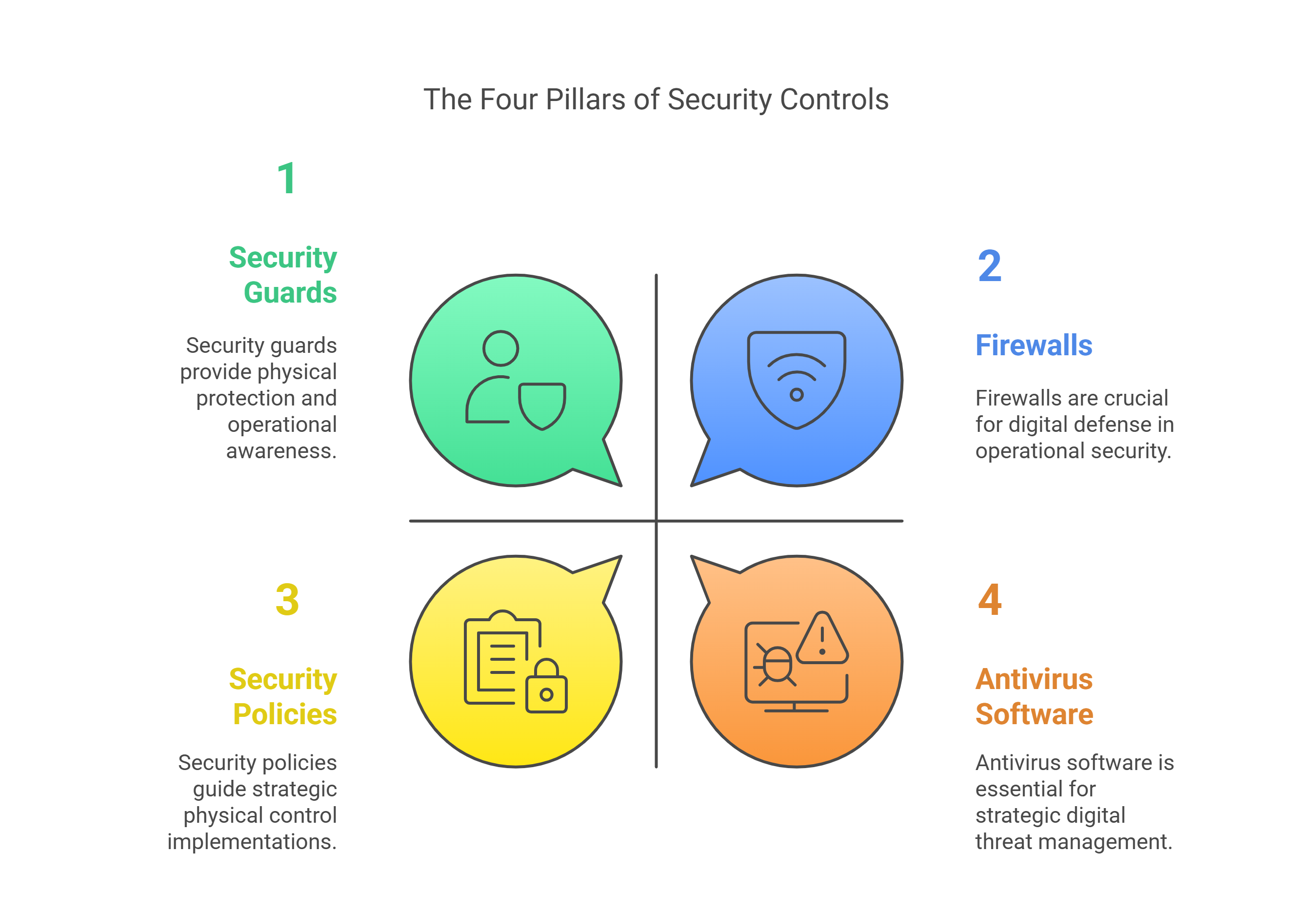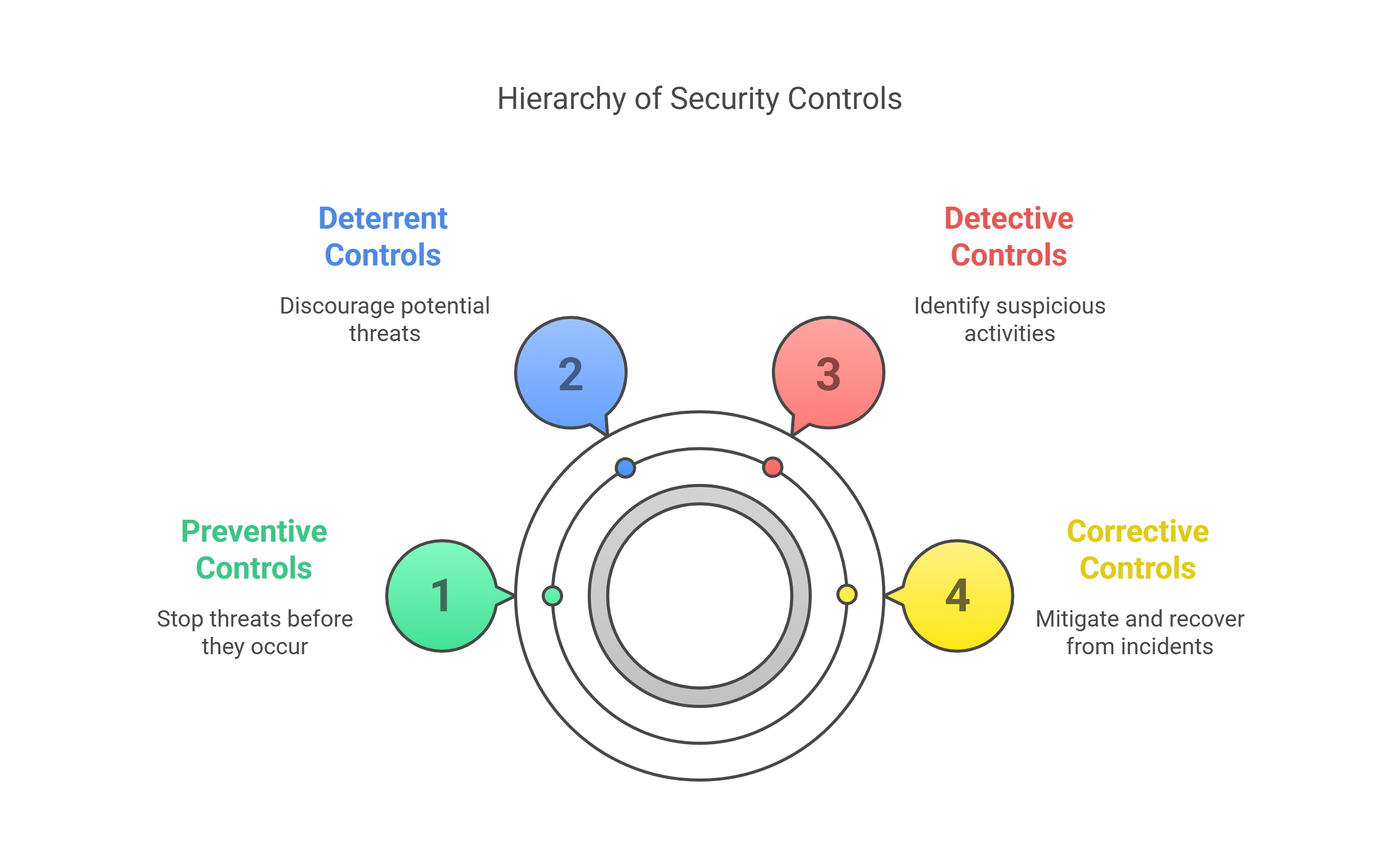
The Ultimate Guide to IT Security Controls: Protecting Your Digital Kingdom Like a Pro
Ever feel like your company's security setup is more like a medieval castle than a modern fortress? You're not alone! In today's digital age, protecting your organization's assets requires more than just a moat and some arrow slits (though wouldn't that be cool?). Let's dive into the world of IT security controls and transform your security strategy from "drawbridge and hope for the best" to "comprehensive digital defense system."
The Four Pillars of Security Controls: Your Defense Dream Team
Technical Controls: The Digital Knights
Think of technical controls as your organization's elite guard unit - except instead of carrying swords, they're wielding firewalls and antivirus software. These digital defenders operate through your technical systems, setting up the electronic equivalent of "thou shalt not pass" at every critical checkpoint. From operating system policies to intrusion detection systems, these controls are your first line of defense against cyber threats.
Managerial Controls: The Security Strategists
If technical controls are your knights, managerial controls are your war council. These are the documented policies and procedures that guide your organization's security strategy. Think of them as your kingdom's laws and customs, but instead of dictating proper court etiquette, they're establishing password requirements and data handling procedures. (Slightly less exciting than medieval court drama, but infinitely more useful in the 21st century!)

Operational Controls: The Human Shield
Remember the town crier who would announce important news? That's your operational controls, but with better fashion sense and PowerPoint presentations. These controls rely on people power - security guards, training sessions, and awareness programs. It's where the human element meets security strategy, proving that sometimes the best firewall is a well-trained employee who knows better than to click on that suspicious "Free Kingdom Inheritance" email.
Physical Controls: The Castle Walls
Some things never go out of style - like having solid walls around your valuable assets. Physical controls are exactly what they sound like: the tangible barriers between your resources and potential threats. From badge readers to security cameras, these are the modern equivalent of castle walls and watchtowers. (Though sadly, most office buildings frown upon installing an actual moat.)

Types of Security Controls: Your Security Swiss Army Knife
Preventive Controls: The Bouncers
These are your "You shall not pass!" controls (Gandalf would be proud). Whether it's a firewall blocking suspicious traffic or a security guard checking IDs, preventive controls stop threats before they become problems. They're like having a really good immune system for your organization - preventing problems is always better than curing them.
Deterrent Controls: The Warning Signs
Remember those "Beware of Dragon" signs in fantasy stories? Deterrent controls are similar, just with less fire-breathing. They might not physically stop an attack, but they make potential troublemakers think twice. Warning screens, security cameras, and signs about consequences serve as the modern equivalent of skull-mounted pikes (much more workplace-appropriate).
Detective Controls: The Security Sherlock
These controls are your digital detectives, always on the lookout for suspicious activity. System logs, security cameras, and motion detectors work together like a high-tech neighborhood watch. They might not prevent crime, but they'll make sure you know about it faster than you can say "elementary, my dear Watson."
Corrective Controls: The Clean-Up Crew
When things go wrong (and sometimes they do), corrective controls are your digital damage control team. Think of them as your organization's version of a superhero cleanup crew - from backup systems that can restore encrypted data to fire extinguishers ready to tackle real-world emergencies. They're the "In Case of Emergency, Break Glass" of the security world.

Making It All Work Together
The key to effective security isn't just having all these controls - it's making them work together like a well-oiled machine. Your technical controls should complement your physical security, while your operational controls reinforce your managerial policies. It's like conducting an orchestra where every instrument plays its part to create a symphony of security.
Remember, security isn't a one-size-fits-all solution. What works for one organization might not work for another. The goal is to find the right mix of controls that protects your assets without turning your workplace into Fort Knox (unless that's what you're going for, of course).
The Bottom Line
Creating an effective security strategy is like building a modern castle - you need strong walls (physical controls), smart guards (technical controls), well-trained soldiers (operational controls), and wise leadership (managerial controls). By understanding and implementing these different types of controls, you can create a security framework that would make any medieval fortress jealous.
In the end, the best security system is one that protects your assets while still allowing your organization to function effectively. After all, what good is an impenetrable fortress if nobody can get any work done?
 Add Row
Add Row  Add
Add 



